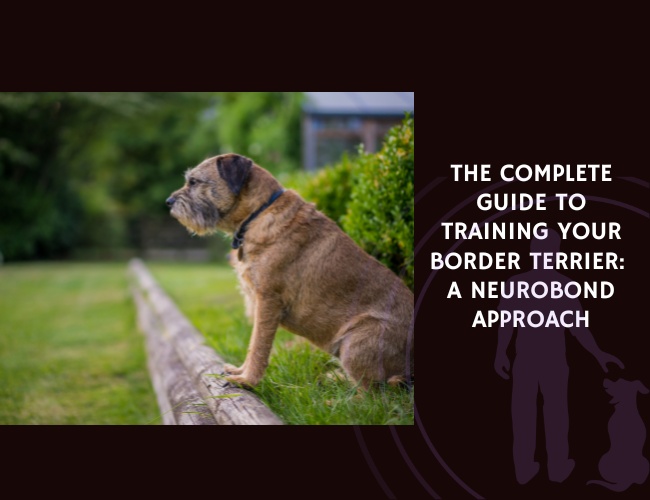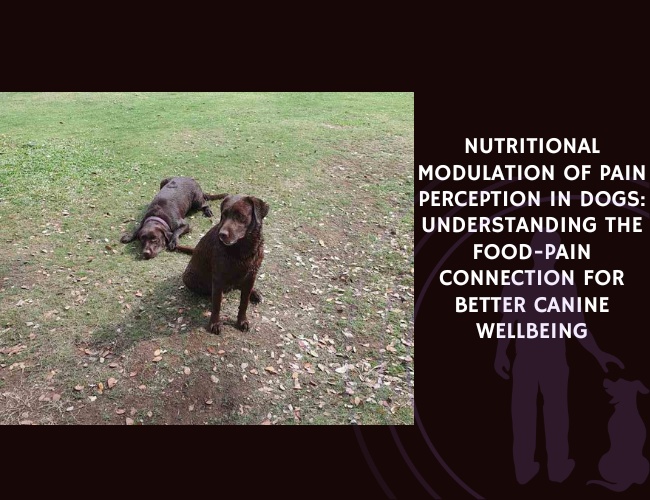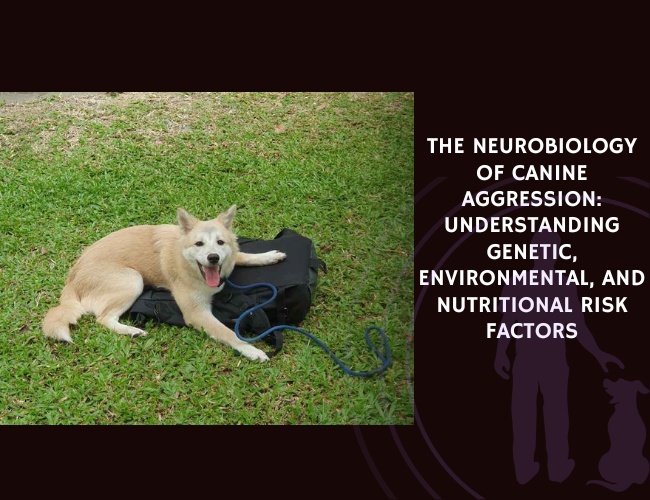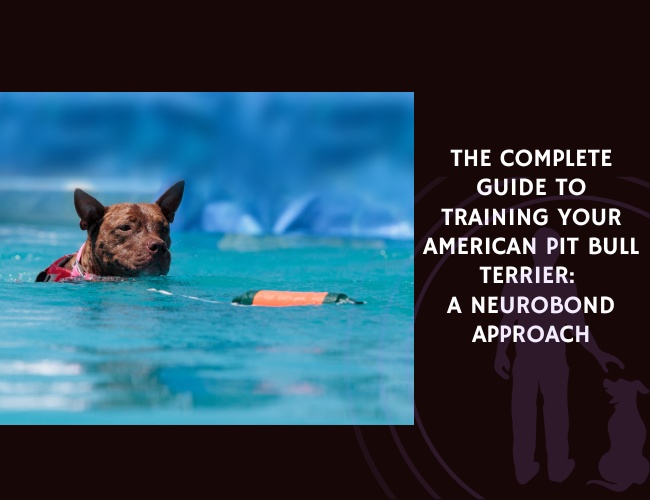Introduction
Picture this: a small, scrappy terrier racing across the Scottish borderlands, independently pursuing foxes through rocky terrain, making split-second decisions miles from their handler. This is the heritage encoded in every Border Terrier’s DNA—a legacy of intelligent independence that makes them simultaneously one of the most trainable and most challenging terriers to work with.
Your Border Terrier arrives with a fascinating paradox: they possess an eager-to-please nature coupled with the trademark terrier independence. They’re sensitive souls wrapped in tough, weather-resistant coats. They want to work with you, but on their terms. Understanding this duality is where successful training begins.
The NeuroBond approach recognizes that your Border Terrier isn’t being stubborn when they pause to consider your request before complying—they’re doing exactly what centuries of breeding designed them to do: think independently. Let us guide you through transforming this independent thinking from a training challenge into your greatest asset. 🐾
Character & Behavior: Understanding Your Border Terrier’s Mind
The Independent Thinker
Your Border Terrier’s independence isn’t a flaw—it’s a feature. Bred to work at distances where handlers couldn’t provide constant guidance, these dogs developed remarkable problem-solving abilities. During foxhunts, they had to make autonomous decisions about how to navigate underground tunnels, when to engage quarry, and how to work alongside foxhounds without human direction.
This translates to a dog who will learn your house rules quickly—they’re intelligent enough to grasp patterns rapidly. But here’s the fascinating part: they’ll then decide for themselves when these rules apply. You might notice your Border Terrier perfectly executing a “sit” command at home, then seemingly “forgetting” it at the park. They haven’t forgotten; they’re evaluating whether compliance makes sense in this new context.
Working with their independence: Instead of fighting this selective compliance, the NeuroBond method embraces it. We create situations where your Border Terrier’s own problem-solving leads them to the behavior we want. Standing still when they pull on the leash isn’t a punishment—it’s letting them discover that pulling doesn’t achieve their goal of moving forward. Their intelligence quickly recognizes the pattern: loose leash equals progress.
Sensitivity Beneath the Tough Exterior
Despite their working terrier heritage, Border Terriers possess surprising emotional sensitivity. With a stranger-directed aggression score of only 20.5% and owner-directed aggression of just 6.0%, they’re among the gentler terriers—but this sensitivity means harsh training methods will backfire spectacularly.
Your Border Terrier’s sensitivity manifests in subtle ways. They might shut down completely if voices are raised, or become anxious if training feels too pressured. This isn’t weakness; it’s emotional intelligence. They’re reading the emotional temperature of every interaction and responding accordingly.
The NeuroBond advantage: By prioritizing connection over control, we work with this sensitivity rather than against it. Your Border Terrier learns to trust that you won’t overwhelm them, making them more willing to engage in training. They become partners rather than reluctant participants.
The Prey Drive Reality
Let’s be honest: your Border Terrier’s prey drive cannot be “trained out.” It’s neurologically hardwired, carved into their brain architecture through generations of selective breeding. That squirrel will always be interesting. That rustling in the bushes will always demand investigation.
But here’s what we can do: we can become more interesting than squirrels. Through the NeuroBond method, we don’t suppress the prey drive—we redirect it. Your Border Terrier learns that engaging with you leads to even better hunting games, controlled and safe.
Vocalization & Communication
Understanding Border Terrier “Talk”
Your Border Terrier’s vocalizations are more nuanced than simple barking. They possess a repertoire of sounds—from the excited yip when they spot potential prey to the frustrated grumble when their independent decision is overruled by your redirection.
The Alert Bark: Sharp, purposeful, meant to notify you of changes in the environment. This isn’t nuisance barking—it’s your Border Terrier fulfilling their historical role as a working partner who communicates important information.
The Frustration Vocalization: A unique whine-growl combination that Border Terriers produce when their high intelligence meets an obstacle. You’ll hear this when they can see a squirrel but can’t chase it, or when they’ve figured out where their toy is but can’t reach it.
The Connection Sound: A soft, almost purr-like rumble that content Border Terriers make when settling against you. This is pure bonding vocalization, their way of saying “we’re good together.”
In the NeuroBond framework, we acknowledge each vocalization as communication, not defiance. When your Border Terrier alert barks, a simple “thank you, I see it” often ends the barking—they’ve successfully communicated, job done.
Body Language Nuances
Border Terriers are remarkably expressive, but their signals can be subtle. That slight ear position change? They’re processing whether to comply with your request. The way they hold their otter-like tail? It’s telling you about their emotional state.
The Thinking Pause: When given a cue, Border Terriers often freeze for a microsecond—they’re not being slow; they’re evaluating. This is your independent thinker at work. In NeuroBond training, we honor this pause rather than repeating commands impatiently.
The Sideways Glance: A classic Border Terrier move when they’re considering whether to comply. They’re not being defiant; they’re weighing options. This is when connection matters most—if they trust you, they’ll choose cooperation.
Training & Education: The NeuroBond Method in Action
Building the Foundation: Working with Border Terrier Intelligence
Your Border Terrier’s cognitive strengths—quick pattern recognition, eagerness to please when it makes sense to them, and high intelligence—make them excellent candidates for the NeuroBond approach. They don’t need hundreds of repetitions; they need meaningful experiences that make sense to their terrier logic.
Week 1-2: Establishing Relevance
Border Terriers need to understand why you matter. Unlike breeds that automatically defer to humans, your terrier is evaluating your competence as a partner.
Start with the Standing Meditation adapted for Border Terrier energy: 5 minutes, twice daily. When they pull toward interesting smells (and they will—that prey drive is always active), stand firm. The moment they glance back at you—even accidentally—take one step forward. You’re teaching them that checking in with you makes exciting things happen.
The Name Game works brilliantly with Border Terriers. Say their name once—only once—and wait. Their independent nature means they might take 3-4 seconds to decide to respond. When they do look, immediately engage in their favorite activity. You’re not commanding attention; you’re making yourself worth attending to.
Managing Terrier-Specific Challenges
The Selective Compliance Solution
Your Border Terrier knows exactly what “come” means. They’re just deciding whether coming to you is more valuable than investigating that fascinating hole. Instead of repeating commands (which teaches them to ignore the first several), we use what I call “strategic withdrawal.”
Turn away and walk in the opposite direction. Your Border Terrier’s curiosity and bond with you will override their current investigation. When they catch up, reward with genuine excitement—you’ve just made choosing you more interesting than independent exploration.
The Digging Dilemma
Your Border Terrier will dig. It’s neurologically programmed. Instead of punishment, provide a designated digging zone. Bury toys or treats there daily. When they dig elsewhere, redirect to their zone without emotion. They learn: digging here brings rewards, digging there brings interruption. Their intelligence quickly grasps this pattern.
Short, Engaging Sessions: The Terrier Attention Span
Border Terriers thrive on variety and mental stimulation but have limited patience for repetitive training. Based on their independent nature and working heritage, optimal training sessions last 5-7 minutes, maximum.
The Three-Task Rule: Each session includes only three different exercises. For example:
- Thirty seconds of connection work (eye contact, check-ins)
- Two minutes of a new trick or command
- One minute of impulse control games
This variety keeps their agile minds engaged while respecting their independence. End while they’re still interested—leaving them wanting more is better than pushing past their engagement threshold.
Performance & Activities: Channeling the Working Heritage
Mental Stimulation Requirements
Your Border Terrier’s intelligence isn’t just above average—it’s exceptional within the terrier group, with a trainability score of 82.0%. But this intelligence comes with a price: boredom leads to creative problem-solving you won’t appreciate.
Daily Brain Work: Your Border Terrier needs at least 30 minutes of mental exercise daily, broken into short sessions:
- Morning: 10-minute scent work (hiding treats or toys)
- Afternoon: 10-minute training session with new challenges
- Evening: 10-minute puzzle toy or problem-solving game
The Working Dog Protocol: Create “jobs” that satisfy their breeding purpose. Teaching them to find and retrieve specific items by name engages their problem-solving abilities. “Find your ball” becomes a complex cognitive task as they learn to discriminate between objects.
Physical Exercise Needs
Here’s a sobering fact: Border Terriers remain excitable well into their teens. This isn’t hyperactivity—it’s the endurance that allowed them to keep up with horses and foxhounds across rough terrain.
Exercise Requirements by Age:
- Puppies (under 6 months): 5 minutes per month of age, twice daily
- Adolescents (6-18 months): 45-60 minutes daily, including training
- Adults (18 months-10 years): 60-90 minutes daily
- Seniors (10+ years): 30-60 minutes, adjusted for health
But here’s the key: physical exhaustion without mental stimulation creates a fit, bored terrier—a recipe for disaster. Every walk should include sniffing time, training moments, and environmental exploration.
Appropriate Activities for the Breed
Earthdog Trials: These tap directly into your Border Terrier’s breeding purpose. Even if you don’t compete, creating earthdog-like challenges at home (tunnels, hidden toys, scent trails) satisfies their instinctive needs.
Agility Training: Perfect for Border Terriers. It combines physical exercise, mental challenge, and handler partnership—addressing all their needs simultaneously. Start with DIY obstacles in your backyard.
Barn Hunt: This sport was practically designed for Border Terriers. It legally and safely channels their prey drive, allowing them to hunt (toy) rats in a controlled environment.
Clever. Conflicted. Connected.
Your Border Terrier doesn’t disobey — they deliberate.
Every command is a decision point. Their foxhunting lineage trained them to assess risk, reward, and context before acting. Training becomes effective only when we respect this evaluative nature.
They bond deeply, but on their terms.
They’ll ignore you one moment and melt into you the next. It’s not moodiness — it’s emotional discernment. Earn their trust with presence, not pressure, and they’ll choose you every time.

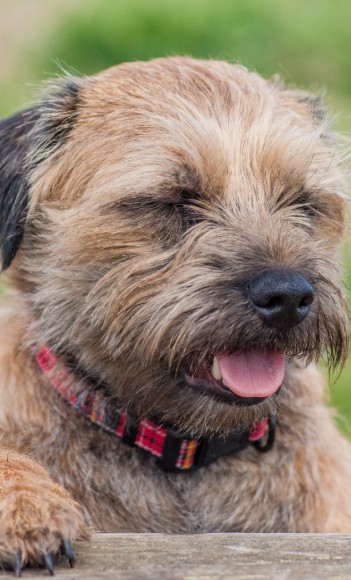

Prey drive isn’t defiance — it’s destiny.
Squirrels don’t compete with you. But boredom does. Make yourself more interesting than instinct by turning training into a game of partnership, and you’ll find their wildness becomes your greatest ally.
Nutritional Recommendations for Training Success
The Food-Training Connection
Border Terriers are typically food-motivated, making treats a valuable training tool. But their tendency toward weight gain means we must be strategic. Every calorie should serve a purpose.
The 90/10 Rule: 90% of daily calories from balanced meals, 10% from training treats. For a typical 15-pound Border Terrier, that’s about 40-50 calories for training—choose wisely.
High-Value vs. Daily Treats:
- Daily training: Single-ingredient treats (freeze-dried liver, small cheese cubes)
- Breakthrough moments: Special rewards (tiny pieces of cooked chicken)
- Long-duration rewards: Frozen Kong toys with measured portions from meals
Feeding Schedule and Training
Transform mealtimes into training opportunities without adding calories:
The Working Meal Protocol: Instead of bowl feeding, use meals for training:
- Morning: Scatter feeding in grass (satisfies foraging instincts)
- Evening: Puzzle feeders or training exercises using kibble as rewards
This approach means your Border Terrier “works” for meals, satisfying their working heritage while reinforcing training throughout the day.
Health Concerns That Impact Training
Neurological Considerations
Some Border Terriers suffer from conditions that directly impact training success. Understanding these helps adjust expectations and methods appropriately.
Paroxysmal Dyskinesia: These episodes of involuntary movements can be triggered by excitement or stress. If your Border Terrier experiences these:
- Keep training sessions calm and predictable
- Avoid sudden environmental changes during training
- Build in recovery time after episodes
- Focus on connection work rather than performance
Canine Epileptoid Cramping Syndrome (CECS): Usually appearing between 2-6 years, these cramping episodes can create negative associations with activities that precede them.
- Maintain detailed logs to identify triggers
- Adjust training to avoid trigger situations
- Use calm, confidence-building exercises post-episode
- Consider medication consultation with your veterinarian
Age-Related Training Adjustments
Puppy Phase (8 weeks – 6 months): The critical socialization window (3-12 weeks) is especially important for Border Terriers. Their tendency toward dog reactivity if under-socialized means this period is crucial. Focus on positive exposures rather than formal training.
Adolescence (6-18 months): This is when Border Terrier independence peaks. They’re physically capable but mentally scattered. Increase structure while maintaining patience. This is when impulse control exercises become essential.
Senior Years (10+ years): Border Terriers often remain mentally sharp into old age. Adjust physical demands while maintaining mental challenges. Scent work and puzzle toys keep aging minds engaged without stressing aging bodies.
Lifestyle & Environment
Creating the Ideal Training Environment
Border Terriers are escape artists—they climb, dig, and squeeze through impossibly small spaces. Your training environment must be Fort Knox-secure, or you’ll spend more time retrieving than training.
Physical Boundaries:
- Minimum 4-foot fencing (they climb)
- Underground barriers (they dig)
- No gaps larger than 3 inches (they squeeze)
- Double-gate system for entries (they dart)
Mental Boundaries: Through NeuroBond training, we create invisible boundaries more powerful than physical ones. Your Border Terrier learns that staying near you brings adventure, while wandering brings boring interruption of activities.
Urban vs. Rural Considerations
City Border Terriers face unique challenges:
- Overwhelming stimuli can trigger prey drive constantly
- Limited off-leash opportunities frustrate independent nature
- Apartment living requires creative exercise solutions
Urban Training Adaptations:
- Focus heavily on impulse control from day one
- Use indoor agility and scent work for mental stimulation
- Find “sniffing spots” for decompression walks
- Create vertical exercise opportunities (stairs, hills)
Rural Border Terriers have different needs:
- Wildlife triggers prey drive more intensely
- Greater freedom can reinforce independence
- Farm life may activate working instincts
Rural Training Priorities:
- Rock-solid recall despite distractions
- Boundary training without fencing
- Livestock desensitization if applicable
- Managing hunting instincts safely
Senior Care and Training Adaptations
The Aging Border Terrier Mind
Border Terriers often remain mentally vibrant well into their teens—that excitable nature persists long after their bodies slow down. This creates a unique training challenge: a mind that wants to work in a body that needs moderation.
Cognitive Enrichment for Seniors:
- Scent discrimination games (finding specific scents)
- Gentle puzzle toys that don’t require excessive movement
- “Find it” games with treats hidden at nose level
- Teaching new tricks that don’t require agility
Physical Adaptations:
- Replace jumping with stepping over low obstacles
- Shorter but more frequent training sessions
- Swimming for low-impact exercise
- Massage and stretching as bonding activities
Maintaining the Bond Through Changes
As your Border Terrier ages, the NeuroBond becomes even more critical. They may lose hearing or vision, but the connection you’ve built becomes their navigation system through these changes.
Sensory Loss Adaptations:
- Touch cues replace verbal cues for deaf dogs
- Scent trails guide vision-impaired dogs
- Vibration patterns communicate at a distance
- Consistent routines provide security
The beautiful thing about the NeuroBond approach? It’s already prepared your dog for these adaptations. They’ve learned to read you through multiple channels, so losing one sense doesn’t break communication.

Common Behavioral Challenges and Solutions
The Recall Dilemma
“Spend extra time on recall training,” every Border Terrier guide advises. But why is recall so challenging for this breed? It’s not defiance—it’s genetics. Their ancestors who came back too readily didn’t survive long in their working role.
The NeuroBond Recall Method: Instead of commanding “come,” we make returning a choice your Border Terrier wants to make:
- The Retreat Recall: Move away from your dog while they’re distracted. Their instinct to keep track of you triggers voluntary return.
- The Party Recall: Occasionally, returning to you results in the best thing ever—a special toy, an amazing treat, their favorite game.
- The Permission Recall: Call them back, then immediately release them to return to what they were doing. Coming to you doesn’t always mean fun ends.
Never use recall for something your Border Terrier dislikes (bath time, leaving the park). They’re too smart—they’ll learn to ignore you when it matters.
Managing Frustration and Impulse Control
Border Terriers, like many working terriers, struggle with frustration tolerance. When they can’t access something they want, they may bark, dig, or become destructive. This isn’t spite—it’s emotional dysregulation.
Building Frustration Tolerance:
The Calm Window Game: Your Border Terrier watches through a window as you hide treats outside. They must remain calm for increasing durations before being released to find them. Start with 3 seconds, build to minutes.
The Pause Protocol: Before any desired activity (walks, meals, play), require a brief calm pause. Your Border Terrier learns that excitement delays rewards while calmness accelerates them.
The Choice Exercise: Present two toys. Whichever they move toward, give them the other one. They learn that patience and allowing you to choose brings better outcomes.
Territorial Behaviors
Despite low aggression scores, Border Terriers can develop territorial behaviors, especially around their perceived “den.” This stems from their breeding to protect farm buildings from vermin.
Territory Management Through NeuroBond:
- Walk your property boundaries together daily, with you “checking” areas first
- Teach a “thank you” protocol for alerting—acknowledge their warning, then give an “all clear”
- Create positive associations with visitors through the “visitor game”—guests predict good things
- Establish you as the “security manager”—they alert, you decide response
Creating Your Personal Training Plan
Assessing Your Border Terrier’s Individual Needs
Not all Border Terriers are identical. Your dog’s individual personality overlays their breed tendencies:
The Confidence Scale:
- Confident Border Terriers need more impulse control work
- Sensitive ones require gentler progressions
- Anxious individuals benefit from predictable routines
The Independence Index: Rate your Border Terrier’s independence (1-10):
- 1-3: Unusually dependent, may have anxiety issues
- 4-6: Typical Border Terrier, balanced independence
- 7-10: Extremely independent, needs strong motivation
The Drive Assessment:
- Prey drive intensity affects recall training priorities
- Food drive determines treat strategies
- Play drive influences reward systems
- Social drive impacts group class suitability
Your 90-Day Transformation Timeline
Days 1-30: Foundation Building
- Establish daily connection rituals (5 minutes, 3x daily)
- Implement threshold protocols at every door
- Begin impulse control exercises with meals
- Start recall foundation with retreat method
- Introduce one puzzle toy daily
Success Marker: Your Border Terrier checks in with you voluntarily 10+ times daily
Days 31-60: Skill Development
- Add distraction to established behaviors
- Introduce agility or earthdog elements
- Extend duration of impulse control exercises
- Practice recall in increasingly challenging environments
- Begin trick training for mental stimulation
Success Marker: Basic behaviors maintained despite moderate distractions
Days 61-90: Real-World Integration
- Training happens everywhere, not just at home
- Behaviors generalize across contexts
- Independence balanced with cooperation
- Prey drive redirected to appropriate outlets
- Communication becomes increasingly subtle
Success Marker: Your Border Terrier makes good choices without constant management
Troubleshooting Plateaus
Border Terriers often plateau around week 6-8. Their intelligence has mapped your patterns, and they’re testing boundaries. This is actually progress—it shows they understand the system and are evaluating it.
Breaking Through Plateaus:
- Introduce novelty: new locations, new challenges
- Increase value of rewards temporarily
- Return to foundation work with added complexity
- Ensure physical exercise needs are met
- Check for health issues (CECS onset, dental pain)
The Multi-Dog Household with Border Terriers
Border Terrier to Border Terrier Dynamics
Multiple Border Terriers can be magical or mayhem. Their independent nature means they may compete for resources or unite in mischief—sometimes both in the same day.
Same-Sex Considerations: Border Terriers can develop same-sex aggression, particularly intact males. Early socialization and clear resource management prevent most issues. The NeuroBond approach—where you’re the source of all good things—reduces competition.
The Terrier Conspiracy: Two Border Terriers may team up, their combined intelligence creating challenges you didn’t anticipate. One distracts while the other executes the plan. Training must happen individually before group work.
Border Terriers with Other Breeds
Your Border Terrier’s reaction to other dogs depends largely on early socialization. That critical 3-12 week window determines whether they see other dogs as partners or competitors.
Ideal Companions:
- Laid-back breeds that won’t compete for resources
- Dogs with different play styles (prevents overwhelming)
- Similar energy levels for exercise compatibility
- Non-terrier breeds often work better (less competition)
Training in Multi-Dog Households:
- Individual training time is non-negotiable (10 minutes per dog daily)
- Group training only after individual foundations are solid
- Prevent “training pollution”—other dogs undermining your Border Terrier’s learning
- Use the calm dog to model for the excitable one
Conclusion: Is the NeuroBond Method Right for Your Border Terrier?
Your Border Terrier comes from a long line of independent problem-solvers, brave enough to face foxes underground, intelligent enough to work without human guidance, yet sensitive enough to form deep bonds with their chosen people. Traditional training methods that work for eager-to-please retrievers or handler-focused herding dogs often fail with Border Terriers—not because these terriers are stubborn, but because they’re sophisticated.
The NeuroBond approach respects your Border Terrier’s intelligence while building the connection that makes them want to cooperate. You’re not suppressing their terrier nature—you’re channeling it constructively. That prey drive becomes focused play. That independence becomes confident cooperation. That sensitivity becomes deep trust.
Success with a Border Terrier means accepting paradoxes:
- They’re tough enough to fight foxes but sensitive enough to shut down from harsh words
- They’re intelligent enough to learn anything but independent enough to choose when to comply
- They’re small enough for apartment living but energetic enough to need substantial exercise
- They’re affectionate with family but aloof with strangers
The NeuroBond method works for Border Terriers because it:
- Honors their independence while building connection
- Uses their intelligence rather than fighting it
- Respects their sensitivity while maintaining boundaries
- Channels instincts rather than suppressing them
- Creates partnership rather than demanding obedience
Your Border Terrier is waiting to show you what’s possible when you stop trying to control and start learning to connect.
Begin with one simple change: tomorrow morning, wait for your Border Terrier to make eye contact before starting any activity. Don’t command it, don’t beg for it—just wait. When those bright, intelligent eyes meet yours voluntarily, you’ve taken your first step toward an invisible leash woven from trust, understanding, and mutual respect.
The journey ahead will challenge your patience, creativity, and consistency. But at the end, you’ll have something remarkable: a Border Terrier who chooses to work with you, not because they must, but because you’ve become the most interesting thing in their independent, wonderful world. 🧡
Remember: Your Border Terrier’s ancestors worked in the harsh borderlands between Scotland and England, making life-or-death decisions independently. That same discriminating intelligence now evaluates your every request. Make yourself worthy of their cooperation, and you’ll have a partner like no other.

